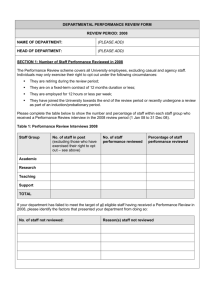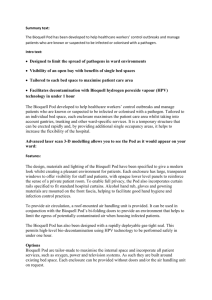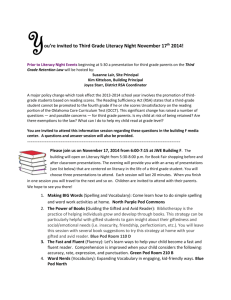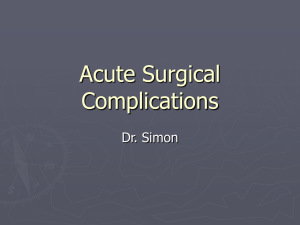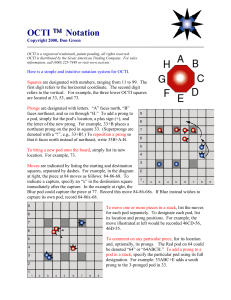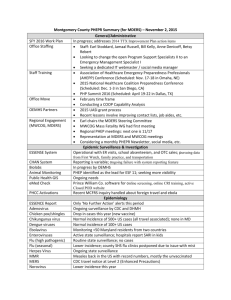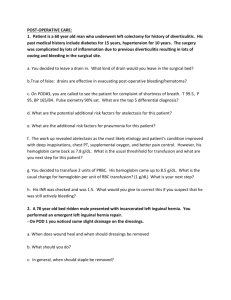Erikson cases from 4.26.12
advertisement
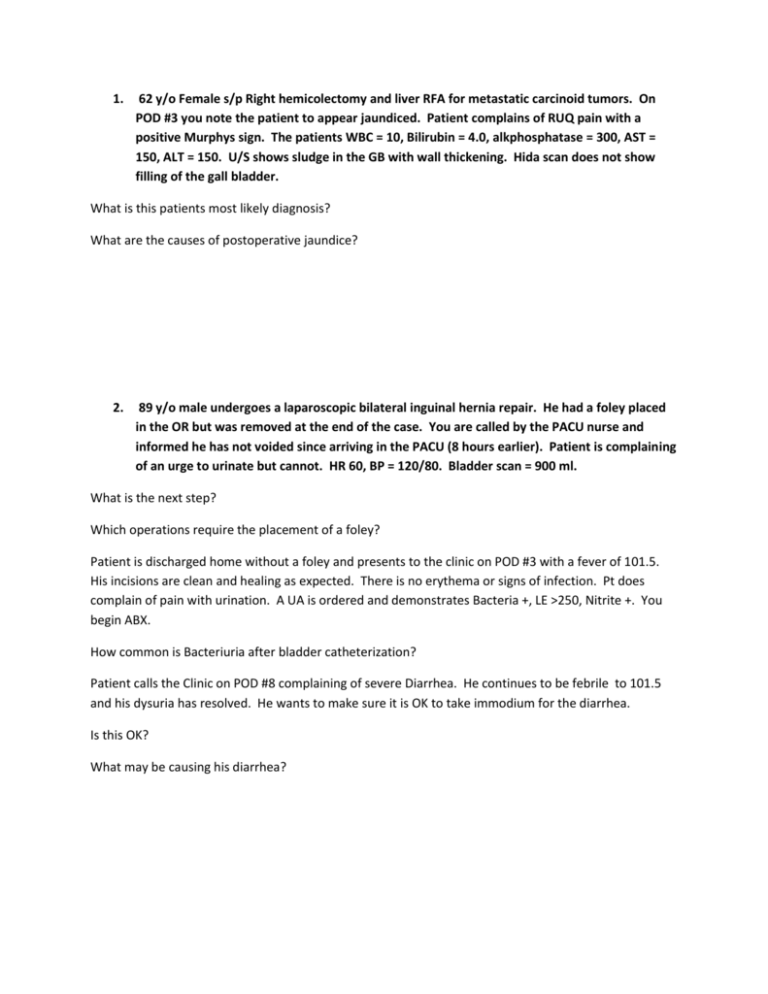
1. 62 y/o Female s/p Right hemicolectomy and liver RFA for metastatic carcinoid tumors. On POD #3 you note the patient to appear jaundiced. Patient complains of RUQ pain with a positive Murphys sign. The patients WBC = 10, Bilirubin = 4.0, alkphosphatase = 300, AST = 150, ALT = 150. U/S shows sludge in the GB with wall thickening. Hida scan does not show filling of the gall bladder. What is this patients most likely diagnosis? What are the causes of postoperative jaundice? 2. 89 y/o male undergoes a laparoscopic bilateral inguinal hernia repair. He had a foley placed in the OR but was removed at the end of the case. You are called by the PACU nurse and informed he has not voided since arriving in the PACU (8 hours earlier). Patient is complaining of an urge to urinate but cannot. HR 60, BP = 120/80. Bladder scan = 900 ml. What is the next step? Which operations require the placement of a foley? Patient is discharged home without a foley and presents to the clinic on POD #3 with a fever of 101.5. His incisions are clean and healing as expected. There is no erythema or signs of infection. Pt does complain of pain with urination. A UA is ordered and demonstrates Bacteria +, LE >250, Nitrite +. You begin ABX. How common is Bacteriuria after bladder catheterization? Patient calls the Clinic on POD #8 complaining of severe Diarrhea. He continues to be febrile to 101.5 and his dysuria has resolved. He wants to make sure it is OK to take immodium for the diarrhea. Is this OK? What may be causing his diarrhea? 3. 67 y/o Male presents to the vascular clinic with a history of bruit noted on physical exam over the left Carotid bifurcation. He is neurologically intact and denies history of stroke or TIA. He has a history of HTN and dyslipidemia. Carotid Doppler exam reveals a 99% stenosis in the left ICA and 50% stenosis in the right ICA. He undergoes an endarterectomy and postoperatively he is noted to have a facial droop on the right side. How often do strokes occur after endarterectomy? Why do strokes occur after CEA? The presence of a Carotid Bruit before cardiac surgery increases the risk of post operative stroke after CABG how much? 4. 57 y/o male in in the ICU after the resection of a SCC of the floor of the mouth with flap reconstruction. His first 24 hours in the ICU were routine but on POD #2 he begins to have tremmors, his heart rate increases to 105, his respiratory rate increases to 24, and he complains of wavy lines on the wall. What is the most likely reason for this patients clinical change? What is the likely cause of this? How does Delirium Tremens differ from postoperative delirium? 5. 50 y/o male with emphysema is admitted to the ICU after a MVC with an open-book pelvic fracture. You are placing a subclavian central line. Durring the placement, the patient begins to cough and then develops hypotension, tachycardia, chest pain, and JVD. What is the differential dx for this patient? What is the treatment for air embolism? 6. 19 y/o Male presents with a GSW to the RLQ. He is hemodynamically stable and complains of abdominal pain. You take him to the OR and find an injury to the cecum and perform a right hemicolectomy with primary anastomosis. Postoperative day 1 he is febrile to 101 F. What is the most likely cause of this patients fever? He then develops a fever on POD 4. What is the most likely cause? He then develops a fever on POD 6. What is the most likely cause? What clinical factors are associated with infectious complications?




